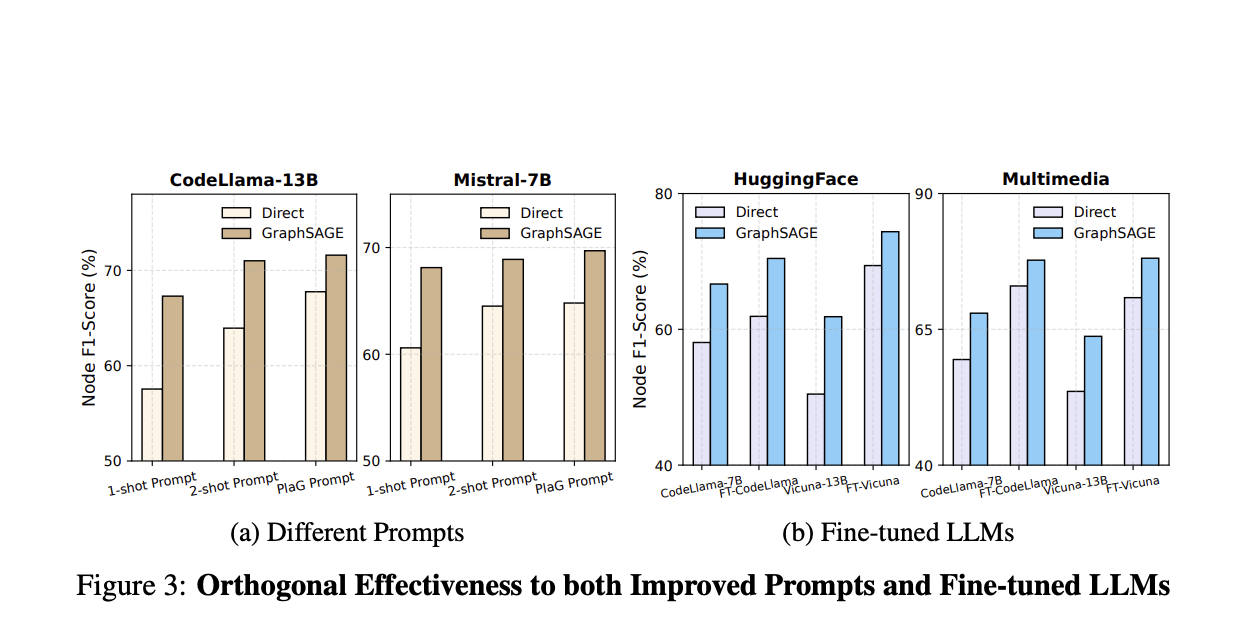Enhancing Task Planning in Language Agents: Leveraging Graph Neural Networks for Improved Task Decomposition and Decision-Making in Large Language Models

Task planning in language agents is gaining attention in LLM research, focusing on breaking complex tasks into manageable sub-tasks arranged in a graph format, with nodes as tasks and edges as dependencies. The study explores task planning challenges in LLMs, such as HuggingGPT, which leverages specialized AI models for complex tasks. Analyzing failures in task planning, the study finds that LLMs struggle with task graph structure interpretation, raising questions about Transformer limitations in graph representation. Issues like sparse attention and lack of graph isomorphism invariance hinder effective graph-based decision-making in LLMs.
Research on task planning in LLMs involves various strategies like task decomposition, multi-plan selection, and memory-aided planning. Using approaches like chain-of-thought, task decomposition breaks tasks into sub-tasks, while multi-plan selection evaluates different plans for optimal results. Traditional AI approaches, including reinforcement learning, offer structured task planning models, but translating user-defined goals into formal planning remains challenging in language agents. Recent advances combine LLMs with GNNs for graph-related tasks, yet challenges in accuracy and spurious correlations persist. Graph-based decision-making methods, like beam search in combinatorial optimization, show promise for enhancing task planning applications in future research.
Researchers from Fudan University, Microsoft Research Asia, Washington University, Saint Louis, and other institutions are exploring graph-based methods for task planning, moving beyond the typical focus on prompt design. Recognizing that LLMs face challenges with decision-making on graphs due to attention and auto-regressive loss biases, they integrate GNNs to enhance performance. Their approach breaks down complex tasks with LLMs and retrieves relevant sub-tasks with GNNs. Testing confirms that GNN-based methods outperform traditional techniques, and minimal training further boosts results. Their key contributions include formulating task planning as a graph decision problem and developing training-free and training-based GNN algorithms.
The study discusses task planning in language agents and the limitations of current LLM-based solutions. Task planning involves matching user requests, which are often ambiguous, with predefined tasks that fulfill their goals. For example, HuggingGPT uses this approach by processing user input into functions, such as pose detection and image generation, that interact to achieve the outcome. However, LLMs often misinterpret these task dependencies, leading to high hallucination rates. This suggests LLMs struggle with graph-based decision-making, prompting the exploration of GNNs to improve task planning accuracy.
The experiments cover four datasets for task planning benchmarks, including AI model tasks, multimedia activities like video editing, daily service tasks like shopping, and movie-related searches. The evaluation metrics include node and link F1 scores and accuracy. The models tested encompass various LLMs and GNNs, including generative and graph-based options. Results show that the approach, which requires no additional training, achieves higher token efficiency and outperforms traditional inference and search methods, highlighting its effectiveness across diverse tasks.
The study explores graph-learning techniques in task planning for language agents, showing that integrating GNNs with LLMs can improve task decomposition and planning accuracy. Unlike traditional LLMs that struggle with task graph navigation due to biases in attention mechanisms and auto-regressive loss, GNNs are better suited to handle decision-making within task graphs. This approach interprets complex tasks as graphs, where nodes represent sub-tasks and edges represent dependencies. Experiments reveal that GNN-enhanced LLMs outperform conventional methods without additional training, with further improvements as task graph size increases.
Check out the Paper. All credit for this research goes to the researchers of this project. Also, don’t forget to follow us on Twitter and join our Telegram Channel and LinkedIn Group. If you like our work, you will love our newsletter.. Don’t Forget to join our 55k+ ML SubReddit.
[Trending] LLMWare Introduces Model Depot: An Extensive Collection of Small Language Models (SLMs) for Intel PCs
Sana Hassan, a consulting intern at Marktechpost and dual-degree student at IIT Madras, is passionate about applying technology and AI to address real-world challenges. With a keen interest in solving practical problems, he brings a fresh perspective to the intersection of AI and real-life solutions.












